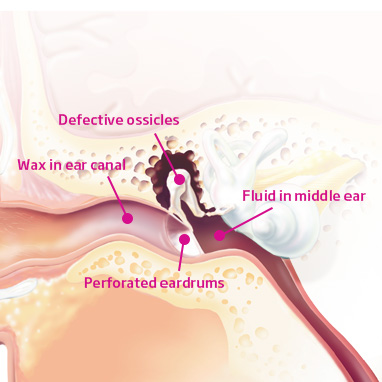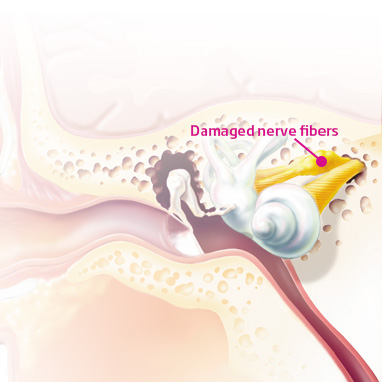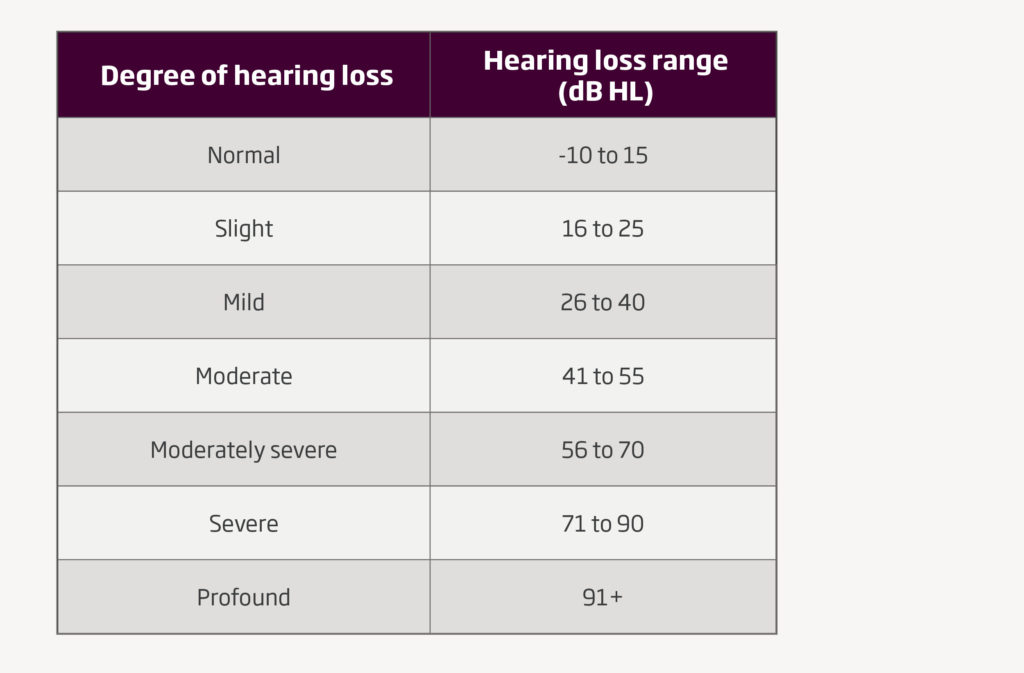Hearing Loss
Not all types of hearing loss are the same, and everyone experiences hearing loss differently. It’s important to understand the various types of hearing loss, so you know how and why your hearing care professional may recommend certain devices.
Generally, hearing loss is divided into two categories: conductive and sensorineural. The difference between the two depends on where the hearing loss originates.

Outer and middle ear hearing loss (Conductive)
Conductive hearing loss is caused by problems in the outer and middle ear, which can prevent sounds getting through to the inner ear. The most common cause can be a build-up of wax in the ear canal, perforated eardrums, fluid in the middle ear, or damaged or defective middle ear bones (ossicles).

Inner ear hearing loss (Sensorineural)
This type of hearing loss happens when the delicate nerve fibers in the inner ear get damaged. This stops them transmitting sound properly. It can be caused by excessive exposure to noise, but the most common causes of sensorineural hearing loss are the natural processes of aging. For some the sensory cells wear out already at the age of 50 whereas others have only negligible hearing loss even at the age of 80. This condition is permanent in most cases.

Degrees of hearing loss
You can visualize levels of hearing loss on a scale of normal to profound. During a hearing test, your hearing care professional measures your range of hearing loss in decibels (dB). As you can see by the chart below, the higher the dB you need to hear sounds, the more serious your hearing loss. An example of sounds in the 16 to 25 dB category would be rustling leaves or whispering.
